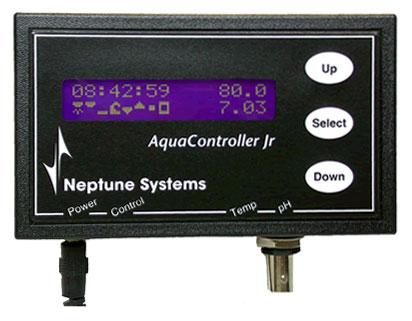
As computer technology advances, the technology for marine aquarium controllers has also advanced. In the beginning, these controllers could only measure pH and turn on a couple of lights or powerheads. Now it is possible to get monitors that not only measure pH, ORP, temperature, and conductivity, but also turn on or off the devices that affect these readings. In addition, these units can also turn on up to 16 devices including lights, pumps, powerheads, solenoids for CO2, and ozone to increase ORP.
Even if such a multipurpose controller is unnecessary, it is still possible to get monitors or monitor/controllers for a variety of the tank’s parameters. These include the common measures such as pH and temperature, and some not-so-common measures such as ORP, oxygen, and conductivity. These latter three parameters give more valuable information and provide a much better idea of the overall health of the tank. Controllers replace the old dry test kit means for assessing these critical parameters. Thus, at the flick of a switch, it is possible to see if the dissolved organic load has been affected by the death of an organism or if an increase in temperature has caused a tank’s oxygen level to drop to dangerous levels. This type of monitoring goes a long way in helping to reduce the guesswork of how a tank is performing.
In a similar fashion, the multipurpose controllers can not only measure these parameters, but can activate or shut off devices to help regulate them as well. Devices such as a solenoid regulating CO2 for a calcium reactor can be shut down at night if the pH drops too low. A chiller can be turned on if the temperature goes too high, and when it reaches a certain level a controller can also turn the lights off as well. To take it one step further, if these steps fail to keep a parameter in check, some of the controllers available right now can also page or phone the tank’s owner to let them know that there is a problem. The alarm technology can also work by sounding an alarm when something is not functioning properly to alert the tank owner without the owner even having to look at the monitor.
In addition to monitoring the tank and indicating when something is not correct, these units also work as multi-function timers for a number of devices. They can act to turn on numerous banks of lights at precise times. In this manner they can have the lighting system simulate sunrise through sunset and thus not shock the tank’s inhabitants by having the lights come on suddenly. Some can even be programmed to simulate the lunar cycle and thus simulate conditions necessary to get some corals and fish to spawn.
This timing capability can also be used with pumps and powerheads as a wavemaker function. By using this function it is possible to get more random water movement than with most other types of systems. Because these timing functions are so precise, you can also use this feature to have the unit signal for trace elements or other compounds to be dosed to the tank in small increments.
Lastly, these units can be interfaced so that they provide a chart on what the parameters they measure look like over time. By doing this it is possible to see how different factors interact. For example, redox potential can be charted versus when the tank is fed. This shows how long it takes the tank to cleanse itself after it is fed to see how well the filtration system is working. In addition to looking at this once, this can be charted over time to see if the filtration system is keeping up with the tank over time.
Electronic monitoring now provides not only a way for assessing all of the important parameters within a tank, but also a means for being alerted should something fail when no one is around. Considering how much time and money is spent on a successful reef system, more and more hobbyists are finding them a worthwhile investment.



